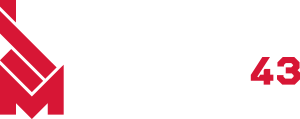Mission43’s Education Discovery Series: Aviation
In session 1 of Mission43’s Education Discovery Series: Aviation, we sat down with Shane McKenna, military instrument flight examiner and owner of Cloud Surfer Aviation in Boise, Idaho. Shane provides insight into using state education assistance benefits as a member of the Army National Guard, Part 61 and Part 141 flight schools, and the process to becoming a professional aviator.
Using State Education Assistance to Fund Flight Training
In Idaho, members of the Air and Army National Guard are eligible for state-funded education assistance, which can be used for education providers located in-state. While the GI Bill restricts flight school funding to Part 141 programs, state-funded education assistance allows members to attend Part 61 programs, provided that they are located in Idaho.
Air Guard members eligible for the State Tuition Assistance Program (STAP) can receive reimbursement for flight training up to $4000 per year.
Army Guard members eligible for the State Education Assistance Program (SEAP) can receive up to $5000 per year.
Part 141 vs. Part 61
Training standards for Part 141 and Part 61 flight schools are the same; both require the same standards of performance and knowledge when it comes to FAA tests. However, they are different in the style of teaching.
Part 141 flight training is more structured, with FAA approved curriculum and more stringent oversight on maintained aircraft. Because of this, the number of hours of required training is reduced. By maintaining the high standards of Part 141, you’re receiving curriculum-based flight training, and you know exactly where you are in the process every step of the way. The school will retain your flight records so your flight training is seamless.
Part 141 training requirements include:
Minimum of 35 hours flight time to earn your Private Pilot License
Minimum of 35 hours flight time to earn your Instrument Rating
Minimum of 190 hours to earn your Commercial Rating
If you are seeking a career in professional aviation and have the time to dedicate to a rigid training schedule, Part 141 may be a fit for you. GI Bill funding can ONLY be used toward Part 141 programs.
Part 61 flight training is more flexible and relaxed than Part 141. Instead of a curriculum-based flight school, students have more control over their training timeline because flight instructors are typically more willing to work around their schedules. This opens up options for part-time instruction for people with busy or irregular schedules. With a Part 61 program, the student keeps track of their flying hours in their personal log-book. So, if your training is erratic or you switch instructors mid-training, you may require extra flight hours to keep your skills current and each instructor must sign off on your previous check-flights.
Part 61 training requirements include:
Minimum of 40 hours of flight time for Private Pilot License
Minimum of 40 hours, plus at least 50 hours of cross country flight time for your Instrument Rating
Minimum of 250 hours for Commercial Rating
If you need a more flexible schedule or want to fly for personal reasons, Part 61 may be right for you.
Credentialing Assistance
The Military Credentialing Advancement Initiative (better known as COOL) can provide up to $4000 annually for courses and exams that lead to industry-recognized civilian credentials in an occupation of your choice, to include Airline Transport Pilot, Airplane Instrument Rating, Certified Flight Instrument Instructor Rating, and other aviation related ratings/certifications.
To learn more or apply, visit the links below:
Scholarships
If you are willing to put in the work, there are quite a few scholarship opportunities available, both to military-connected members and the greater public. This list is not comprehensive, but provides a great starting point.
AAERO Scholarship Program awards up to $2,500 for aspiring pilots who have not yet received their private pilot’s license.
Aircraft Owners and Pilots Association awards members up to $7,500 for training as a private, sport, or recreational pilot. If you are not an AOPA member, you can get a free 6-month student pilot membership.
Idaho Aviation Association has 4 different scholarships with varying requirements, to include three $3000 scholarships and one $1500 scholarship. Applicants can apply to only one of the available scholarships.
Leroy W. Homer Jr. Foundation awards one scholarship a year for people ages 16-23 pursuing professional flight instruction, not through a university, leading to certification as a private pilot. Scholarship applications open October 31st through January 31st.
Stripes to Bars is a volunteer-run 501(c)(3) non-profit organization that assists veterans in their transition to aviation careers. Stripes to Bars provides annual scholarships, nationwide, for fixed-wing and rotary aircraft. Application window is open each year from January 1st to May 15th.
The Ninety-Nines Amelia Earhart Memorial Scholarship Fund for female aviators offers five types of aviation scholarships, to include flight training and emergency maneuver training.
Women in Aviation: Women Military Aviators Dream Flight Scholarship up to $2,500 awarded to female aviators pursuing flight ratings at an accredited institution or FAA Part 141 approved flight school.
Contact Us
If you’re thinking about starting a career in aviation and want more information, contact a Mission43 education advisor today!

